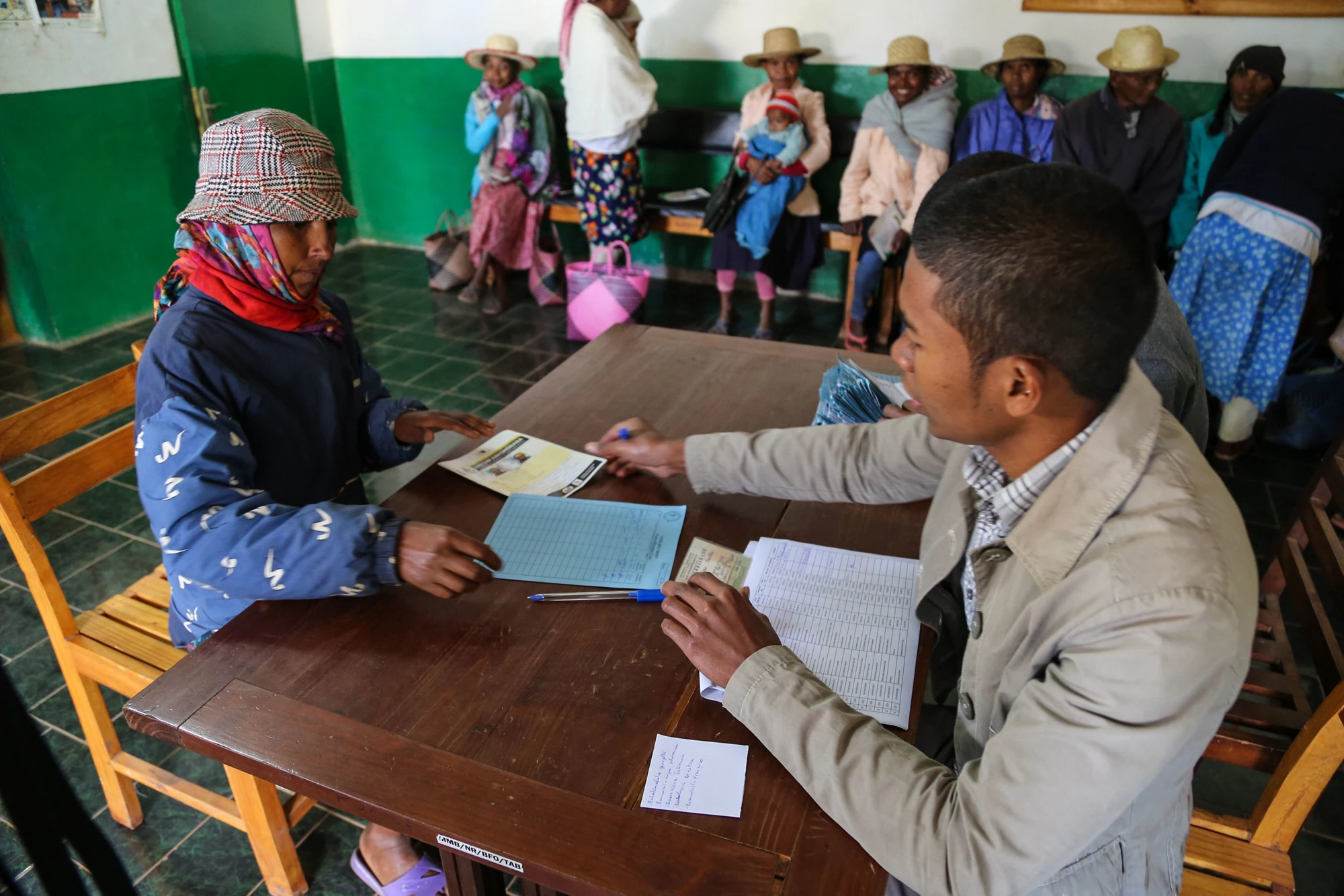 Cash transfer in the town of Betafo, Madagascar
Cash transfer in the town of Betafo, Madagascar
As the COVID-19 pandemic enters its ninth month, governments around the world continue to face tough choices in terms of providing help. Who should receive emergency assistance? What form should that assistance take? How should it be delivered, and for how long? As people lose their jobs, businesses shutter, and lockdown orders persist, demands for social assistance are growing just as tax revenues are shrinking. Responding rapidly to citizen needs can quite literally be a question of life and death: providing emergency cash and food assistance, for example, allows people to stay at home and helps to contain the virus’s spread.
Many factors at the intersection of economics, social policy, and politics influence decisions about social assistance. The decisions about who should get aid necessarily depend on what information the government has, now, about who is poor. Decisions around providing cash, voucher, or in-kind assistance, for example, involve trading-off letting people determine how to use assistance to meet their needs vs. the desire to encourage certain types of spending, such as on food. Two factors, however, should always enter into these critical decisions about social assistance: data and evidence.
Let’s take cash transfers as an example. In expanding access to cash assistance in response to the pandemic, many countries built off existing targeting data and used already-in-place program platforms. Pakistan, for example, launched an emergency cash program for more than 14 million households leveraging existing social benefit databases, according to the most recent World Bank information. This ability of governments to rely on existing data in an emergency demonstrates the importance of investing in social protection systems when times are good to prepare for tough times.
On the other hand, the global pandemic has also illustrated the limitations of some of these existing databases of poor households. Many of these systems were designed to identify the long-run poor and use measures of durable assets for targeting, which can be updated relatively infrequently. This makes sense for programs aimed at alleviating chronic poverty but are showing their limitations now.
Data and evidence for the Next Generation of Social Protection Systems
The COVID-19 crisis has revealed powerfully the need to measure poverty and need in a more dynamic way. Building social registries that are broad enough to allow systems to reach the newly vulnerable in times of crisis is one of the cornerstones of being prepared for future shocks. These investments in administrative data pay off for themselves many times over. For example, recent research has focused on adapting safety nets to urban contexts. An upcoming paper by the World Bank shows that - thanks to a range of innovations in data collection, targeting, information systems, payment mechanisms, communication, and institutional arrangements - cash transfers have been adapted to urban areas in at least 11 countries in Africa.
Rigorous evidence also allows decision makers to understand the pros and cons of social protection policy alternatives before launching a new program or expanding an existing one. The large body of evidence on targeting has come in handy in guiding governments’ COVID-19 responses. Generating this evidence on targeting, however, did not happen overnight–it took many consultations with key stakeholders, lots of time, and trial and error. For example, research by two of us (Hanna and Olken, along with our colleagues Vivi Alatas, Abhijit Banerjee, and Julia Tobias), compared the effectiveness of proxy-means testing and community-based targeting in Indonesia. In a series of randomized trials conducted over several years, we found that community-based targeting was about as effective as proxy-means tests in identifying poor households based on consumption, but community-based targeting led to much higher community satisfaction and was more effective at selecting households that self-identified as poor. While designing this evaluation took time and effort, it was worth the investment. The process of creating evidence (in this case, designing targeting methods) is fundamental in shaping the design of safety nets for the future.
In the past, investing in data and evidence might have felt like a luxury. However, these investments are a necessity, now more than ever, not only to face immediate needs of families, but also to avoid the potential long-term repercussions of the crisis on human capital. The ability to rely on existing data and rigorous evidence has made a huge difference in the COVID-19 responses of many governments. To be better prepared for future shocks, data and evidence can no longer be an afterthought.





Join the Conversation